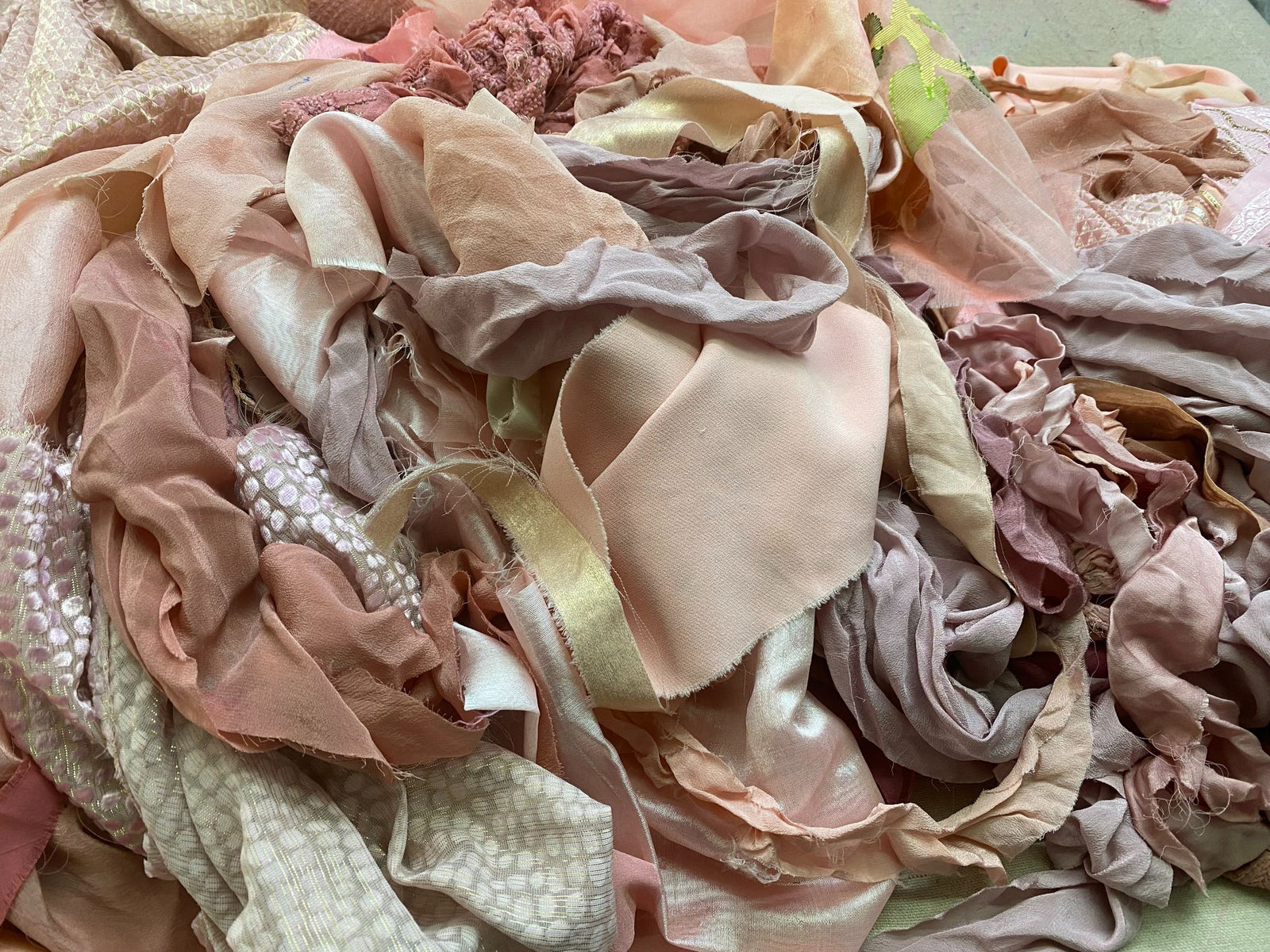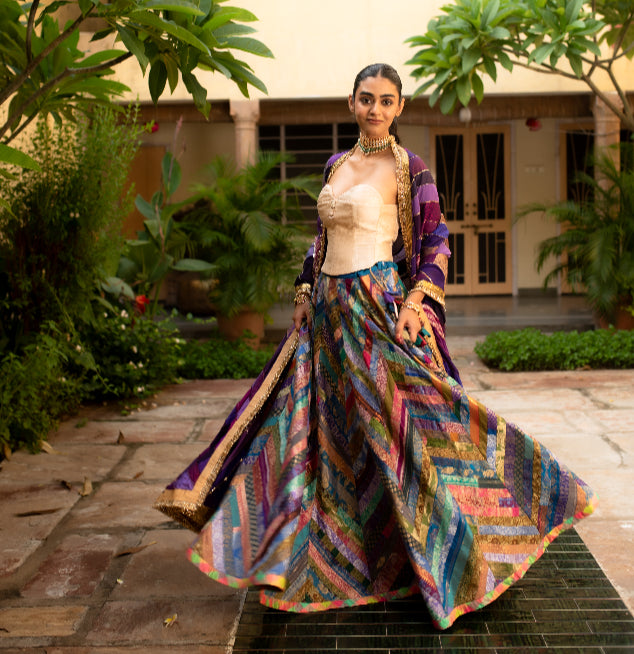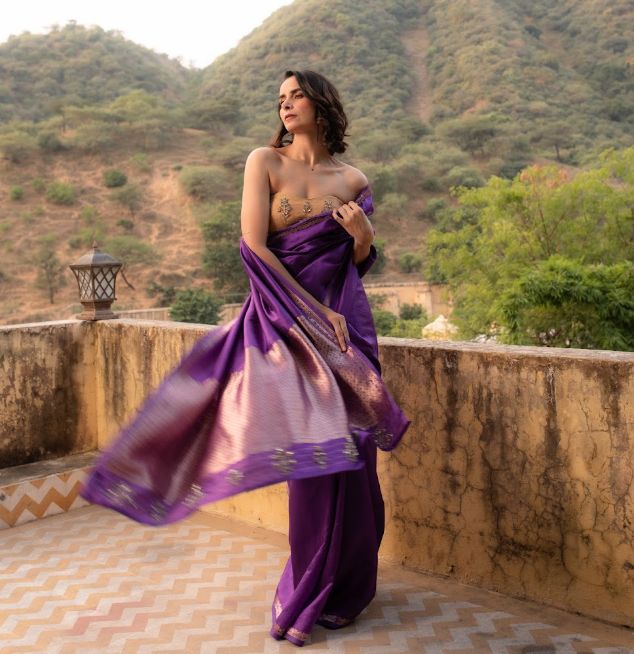Upcycled Clothes: What's Behind the Rise of Upcycled Garments?

The Evolution and History of Upcycling
Can you honestly recall when you last dressed up in your ‘going out clothes’? Not really? Thought so.
The pandemic hasn’t given any reason for us to play dress up and shop for extravagant clothing or designer wear in the past year. Fast-fashion has experienced a slowdown this year and upcycled garments is becoming the new wave of sustainable fashion. Fashion designers too have birthed interesting pieces in fashion, and gave eco-conscious fashionable folks a new trend- a sustainable one, so to speak.
So, why is upcycled garments catching up?
Upcycled clothes make use of existing pieces, fabrics, and garments turning them into brand new pieces of pret clothing and accessories.
The appeal of ‘wear once, throw away’ dresses has waned for now, giving a big push to
upcycled garments.
What’s Behind the Rise of Upcycled Garments?

The fashion industry is infamous for its extensive textile waste problem; making it one of the largest polluters globally. It is shocking to note that an estimated 92 million tonnes of textile waste is dumped into landfill every year, which is equivalent to a truck full of clothes ending up on landfill sites every second!
Thus, it is fair to say that upcycled garments are environmentally friendly, less expensive, use fewer resources, water, and energy. Upcycling creates unique pieces of upcycled garments with a responsible alternative. And many garments can't be recycled at all.
Conscious consumers are aware of all the carbon emissions that textile waste creates. Upcycled clothes help reduce the ecological footprint of our wardrobe. And it also supports local businesses and artisans involved in the collection. As customers become conscious of wasteful fast-fashion, it’s important for the fashion industry to address this backlog of garments in a sustainable way.
Upcycling has been the biggest trend of the year 2021, with the likes of Balenciaga, Miu Miu, and Coach, all exploring how they can upcycle garments and materials.
What is Upcycling?

One man’s trash is another man’s treasure, have you heard of this adage yet?
Upcycling in the example of clothing, is taking something that is outgrown, or is stained/torn, and refashioning it into a wearable product from it. Remember how scrapes of fabric are used to create a chic patchwork outfit? Upcycling old clothes or fabrics are done using pre-consumer or post-consumer waste or a combination of the two.
- Pre-consumer waste is produced during manufacturing such as the leftover pieces of fabric after cutting out a pattern.
- Post-consumer waste is a result of the finished product which has reached its shelf life, such as a Shirt that doesn’t fit anymore.
While most clothes will last for years, changing fashion trends reduces the lifespan which is further shortened by buyers' love for fast fashion.
Upcycled garments means giving a new life to old clothes by creating something extraordinary and unique. Think of the huge positive impact on the environment! Upcycling reduced the demand for new clothing production, which would otherwise be extremely wasteful and damaging.
Why is Upcycling Clothes More Than A Fashion Trend?
Upcycling garments are a good way to reuse, recycle and explore design capabilities. It’s also important to be conscious about sustainability. Upcycling old clothes stop the burden that is caused by textile pollution. Upcycling also means reusing materials that may end up in the landfill in creative and innovative ways.
Here are some of the reasons upcycled clothes are the latest trend to sweep the fashion industry.
1. It's a boon to the environment
With upcycled garments, the need for additional raw materials is drastically reduced which would require lesser chemicals used during production. This process resolves issues like poor air quality, landfill waste, water pollution, saving of our rainforests, and reducing greenhouse emissions. Upcycled clothes are not only about preserving heritage, but it's also about the environment.
2. Saving the landfill pile on
Designers today are making use of their creative streaks into designing gold fashion from the old. Plenty of garments and fabrics that were once en route to landfill are now in the good hands of creative people. Eco-conscious designers today are making efficient use of leftover materials such as vintage textiles, garments like kurta, ghagra, dupatta, Saree, etc into Couture.
3. Least use of natural resources
Upcycling existing resources means no new raw materials will be used in the production process. Did you know that it takes 2,700 litres to produce cotton to make a t-shirt? It is important that the fabric you put on your body matters. Avoid fabrics that may carry toxins and choose the ones you’ll feel amazing while wearing it.
4. Glorifying artisanal work and craftsmanship
Behind every upcycled garment, there is an artist who believes in recreating craftsmanship which is just not seen anymore. Also, centuries-old, artisanal craft kantha offers a new perspective upcycling, which is all about stitching together old fabrics in layers.
5. Upcycling is flexible
Upcycling clothes also allow your old clothes to evolve, just as fashion evolves itself. Upcycled garments make them flexible to change into whatever fashionable item it wants to be. Your grandmother's cotton Saree can be designed into a pant-suit, or your mama’s Brocade dupatta can transform into a crisp jacket. Really, upcycling can be fun and creatively satisfying!
6. Preserving heritage value
Heavily-embroidered bridal wear is going under the fashionable knife. New-age brides have emotional attachment to pieces passed on by their mothers and they preserve them by upcycling them. An upcycling designer transposes hand-crafted embroidery from vintage Saree's , and heirloom fabrics, etc into new pieces with an updated style and finish.
Is there a difference between upcycling and recycling?

Yes, the difference is stark, but both are sustainable ways of reducing fashion waste.
Upcycling is reusing the materials to create a product of higher value than the original, while recycling is converting waste into reusable material.
Here's how you know the difference between upcycling and recycling:
- Upcycled clothes focus on keeping the material in its original form.
- Recycling clothing involves a mechanical or chemical process to create a new material.
Both practices save natural resources, reduce waste, reduce carbon emissions, and create a more sustainable future. Transforming used clothing to become an upcycled garment is done through recycling, reselling, and upcycling.
If you’re into sewing, you can design denim, shirts, or old items of clothing into fashionable upcycled clothes and DIY fashion accessories. Fashion is fun, remember?
What Should You Do With Your Old Clothes?
There are many fun ways to make new clothes from old clothes. From denim jeans to old t-shirts, and Saree's to dupattas, here's how you can design old clothes into wearable upcycled clothes.
- Give a Saree a fresh spin and turn it into a salwar-kameez.
- Tie & dye-printed garments like leheriya, bandhani and ikats to make leisurewear, kimonos and nightgowns.
- Old zari borders are used to glam up an evening dress.
- Reconstruct a Brocade dupatta into an indo-western Blazer or a Jacket.
- Design old shirts into fluffy pillow cushion covers.
Out With The Old And in With the Upcycled Garments!
As long as fashion designers choose to pursue zero-waste policy at their fashion labels, ‘Zero Waste Fashion’ will then trend.
So, here’s to making our planet and your wardrobe – a better place. Upcycled clothes are the new chic, the new confidence. Traditional techniques like patchwork or Kantha now add value to the upcycled garments. The future of sustainable fashion will stay as

